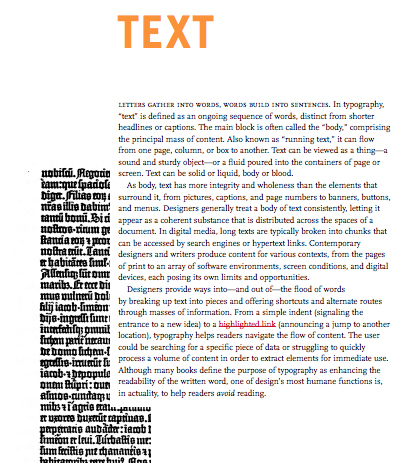Discussed at our Friday 10/5 meeting:
“[T]he suppression of visuality in the alphabet’s abstract coding system provides  the groundwork for normative representations of both cultural and individual development as matters of overcoming a dependence on the visual that is taken to be immature, ephemeral and manipulative” (Trimbur, 262).
the groundwork for normative representations of both cultural and individual development as matters of overcoming a dependence on the visual that is taken to be immature, ephemeral and manipulative” (Trimbur, 262).
“Studying and teaching typography as the culturally salient means of producing writing can help composers in the labor process and thereby contribute to the larger post-process work of rematerializing literacy” (263).
“Typography, on the other hand, calls attention to how the look of the page communicates meaning by treating text as a visual element that can be combined with images and other nonverbal forms to produce a unit of discourse” (267).
At Friday’s D-WRD meeting we used John Trimbur’s chapter “Delivering the Message: Typography and the Materiality of Writing” as a prompt for a good discussion on a range of pedagogical, writing, and technology issues:
- Pete introduced us to this interesting and accessible video on Gestalt & Typography
- Kinross on the “Rhetoric of Neutrality” (PDF)
- James Elkins’s Facebook page
- Elkins’s book, Visual Practices Across the University
- Typographic issues in Digication (student resources):
- Writing Center tutorial on CSS in Digication
- Molly Bang’s Picture This: How Pictures Work
 Friday, 10/5
Friday, 10/5
- Typography in the writing class: Moore
- Reading: Trimbur, (From Rhetoric and Composition as Intellectual Work.) “Delivering the Message: Typography and the Materiality of Writing.” PDF
- Compose, Design, Advocate, ch 9
- Background: Errol Morris:
— Do this first
— Then read this and this

